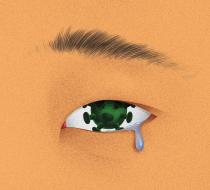Professor tracks rise in racism linked to pandemic Favorite
Research from Professor and Chair of Asian American Studies Russell Jeung spurs launch of online reporting center to document COVID-19 discrimination.
As the coronavirus spreads globally, San Francisco State University Asian American Studies Professor and Chair Russell Jeung is tracking a different corrosive contagion — racism and xenophobia. Since January, he’s noticed a sharp rise in media reports about coronavirus-related discrimination, a finding he highlighted in recent reports sent to California civil rights groups. As a result, some of those groups are now working with the Asian American Studies Department to track — and hopefully help stop — coronavirus-inspired harassment.
In one recent study, Jeung and two collaborators surveyed American news reports between Feb. 7 and March 9 and found a 50% increase in the number of articles about discrimination related to the COVID-19 pandemic. In that first week, there were 93 stories. By the fourth week the number ballooned to 140 articles. And 17% of those stories featured cases of Asian Americans being harassed, attacked or bullied. One story involved a Los Angeles County youth who was assaulted at school by his peers and accused of having the coronavirus. Another video showed a New York City subway rider spraying an Asian man with deodorant.
Jeung divided the news into thematic categories: community resistance to racism (27%), stereotyping (16%), discrimination against Asian American communities (23%) and politician statements and policies (14%). “There’s an image circulating in the news of President Trump’s prepared remarks with ‘coronavirus’ crossed off and ‘Chinese virus’ written above it in the speech,” Jeung said. “That’s intentional China bashing.”
This isn’t the first time the Asian community has been targeted like this, Jeung says. “The Yellow Peril,” a term coined in the 1800s to refer to xenophobic sentiments about Asians, centered on a belief that Asians were disease carriers and should be excluded, quarantined, deported or segregated — all actions that occurred during previous public health crises.
“In the 1800s, there was a smallpox scare and people burned down Chinese settlements,” he said. “In the 1900s, people were afraid of the bubonic plague and they quarantined San Francisco’s Chinatown so that the Chinese couldn't go in or out, but white people could.”
The details in Jeung’s reports prompted California leaders to take action. San Francisco State, the Asian Pacific Planning and Policy Council (A3PCON) and Chinese for Affirmative Action (CAA) launched the Stop AAPI Hate Center on March 19. The website allows people to report harassment, shunning, bullying and other racially motivated attacks and assaults they witness or experience firsthand. Since it launched, it’s received more than 100 reports a day.
Establishing the online center was one of three outcomes from Jeung’s research. A second is a statewide anti-racism ad campaign, which will likely target social media, grocery stores and mass transit when it launches.
Elected officials, specifically members of the state’s Asian Pacific Islander Legislative Caucus, have advocated for public condemnation of racism towards the Asian community — a third outcome from the report. In a recent address, Gov. Gavin Newsom urged the public to stop racism against Asian Americans.
Though he’s been alarmed by the spike in anti-Asian discrimination, Jeung, whose department is based in the College of Ethnic Studies, is impressed by the swift action to combat it. “This is a good example of community-engaged research that has policy impact,” he said. “The College of Ethnic Studies has this legacy of working with community partners to try to effect social change. This is just another example of how we work with students and the community to really empower the most marginalized in our society.”






